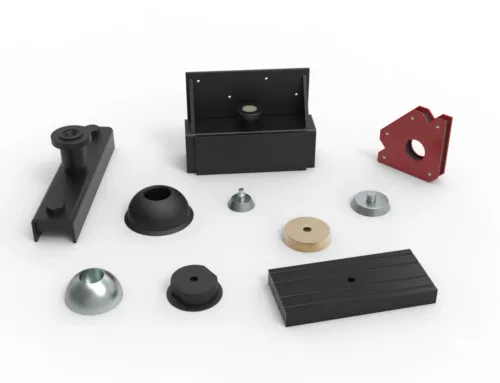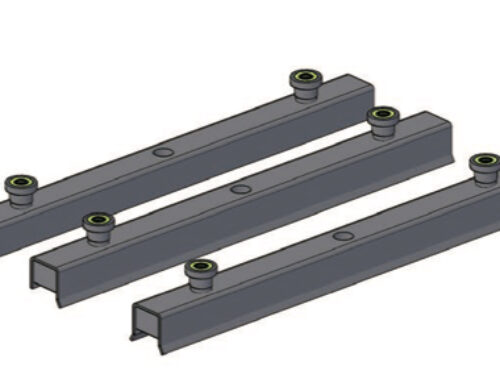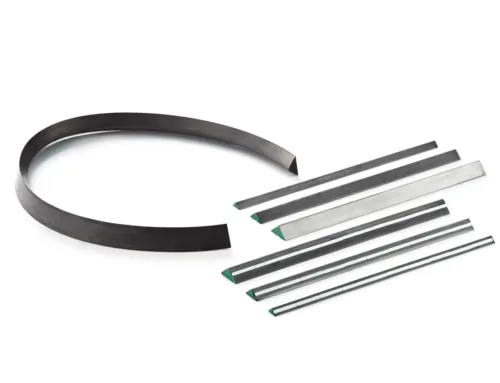If you’re looking to explore next-generation magnetic cooling systems, you’ve come to the right place. This cutting-edge technology is reshaping how we think about energy-efficient, eco-friendly cooling—moving far beyond the limits of traditional methods. Whether you’re an industry professional, engineer, or innovator curious about the future of refrigeration, understanding these advanced systems is key to staying ahead. And with trusted suppliers like NBAEM driving the material innovations behind this revolution, the possibilities are vast and exciting. Let’s dive in and see how magnetic cooling is set to transform sustainable cooling solutions for good.
What Are Magnetic Cooling Systems
Magnetic cooling systems use a process called the magnetocaloric effect to cool spaces and substances efficiently. When certain materials—known as magnetocaloric materials—are exposed to a magnetic field, they heat up. When the magnetic field is removed, these materials cool down. This temperature change can be harnessed to move heat away, creating a refrigeration effect without relying on traditional refrigerants.
Basic Principles of Magnetic Refrigeration
- Magnetocaloric Effect: Applying a magnetic field aligns the magnetic moments in the material, causing it to release heat (warm up).
- Heat Removal: The system transfers this heat to the environment through a heat exchanger.
- Cooling Phase: When the magnetic field is removed, the material’s magnetic moments become disordered, absorbing heat and lowering the temperature.
- Cycle Repeat: This cycle repeats rapidly to provide continuous cooling.
Comparison with Traditional Vapor-Compression Cooling Systems
| Feature | Magnetic Cooling | Vapor-Compression Cooling |
|---|---|---|
| Cooling Mechanism | Magnetocaloric effect | Compression and expansion of refrigerants |
| Use of Chemicals | No harmful refrigerants | Uses greenhouse gases and chemicals |
| Energy Efficiency | Higher potential efficiency | Moderate efficiency |
| Noise and Vibration | Lower noise, fewer moving parts | Often louder and vibration-prone |
| Maintenance | Less frequent due to simpler design | Requires regular maintenance on compressors and refrigerant circuits |
Key Components in Magnetic Cooling Systems
- Magnetocaloric Material: Core cooling element that changes temperature under a magnetic field.
- Magnet: Creates the magnetic field needed for the magnetocaloric effect.
- Heat Exchangers: Transfer heat between the magnetocaloric material and the environment or space being cooled.
- Regenerator: A structure that improves heat transfer efficiency within the system.
- Control Unit: Manages the magnetic field cycles and system operation for optimum performance.
Magnetic cooling systems represent a promising alternative to conventional refrigeration by leveraging clean, efficient physics for environmentally friendly cooling solutions.
Why Next-Generation Magnetic Cooling The Need for Innovation

Traditional cooling systems, like vapor-compression units, still dominate the market but come with significant environmental and energy challenges. They rely heavily on refrigerants that can harm the ozone layer and contribute to greenhouse gas emissions. Plus, these systems often consume a lot of electricity, increasing both energy costs and carbon footprints, which is a growing concern for U.S. households and businesses aiming to reduce their environmental impact.
Magnetic refrigeration offers a promising alternative. Using the magnetocaloric effect, it cools more efficiently by changing the temperature of special magnetic materials with a magnetic field—no harmful gases involved. This leads to better energy efficiency, lower greenhouse emissions, and improved operational reliability since magnetic systems have fewer moving parts that can wear out.
Technological Advances Driving the Next Generation of Magnetic Cooling
The next wave of magnetic cooling systems is powered by breakthrough magnetic materials, especially advanced magnetocaloric materials that deliver stronger cooling effects with less energy. These materials are the heart of improved magnetic refrigeration technology, boosting overall system efficiency and performance.
Rare-earth elements and specialized alloys from NBAEM play a crucial role here. Their high-quality magnetic materials help create more effective magnetocaloric cycles, making cooling faster and more reliable. NBAEM’s expertise ensures these alloys offer better thermal response and durability, which directly supports improved energy efficiency.
On the design front, magnetic cooling systems are becoming more compact and scalable. Engineers focus on reducing the size and cost of components without sacrificing performance. This means systems can now fit into more applications, from home appliances to automotive air conditioning, while lowering production expenses.
Another big step forward is the integration of intelligent controls and IoT technology. Smart sensors and automated systems optimize cooling cycles in real-time, boosting efficiency and extending the lifespan of components. This connected approach also offers better monitoring and maintenance alerts, making magnetic refrigeration smarter and easier to manage.
NBAEMs Role in the Future of Magnetic Cooling Systems
NBAEM is at the forefront of developing advanced magnetic refrigeration materials designed specifically for next-generation cooling systems. Their cutting-edge magnetocaloric materials offer improved performance, durability, and energy efficiency, making them ideal for a wide range of applications—from residential air conditioners to industrial refrigeration.
The company’s strong focus on research and development drives continuous innovation. NBAEM’s R&D teams work closely with cooling system manufacturers to tailor materials that maximize the magnetocaloric effect while reducing costs. This collaboration accelerates the practical adoption of magnetic cooling technology across the market.
For example, NBAEM’s high-performance rare-earth alloys have already been integrated into prototypes of automotive air conditioning units and eco-friendly industrial cooling systems. These case studies highlight how NBAEM materials help push the boundaries of efficiency and sustainability in real-world solutions.
Market Trends and Future Outlook for Magnetic Cooling Systems
Magnetic cooling systems are gaining momentum worldwide, with strong growth forecasts especially in North America, Europe, and parts of Asia. More industries and consumers are recognizing the benefits of energy-efficient and eco-friendly refrigeration technologies, driving faster adoption. Governments are also stepping in with regulations aimed at reducing greenhouse gas emissions, which favors the switch from traditional vapor-compression systems to magnetic refrigeration.
However, the path to large-scale commercial use still faces hurdles. Cost reduction, material availability, and system scalability remain key challenges. Fortunately, ongoing innovations—in magnetic materials, system designs, and integration—are helping overcome these barriers. For example, advances in compact designs and intelligent controls are making magnetic cooling more practical and affordable for a wide range of applications.
Collaboration is playing a crucial role in this shift. Partnerships across the magnetic material supply chain, including suppliers of rare-earth alloys and manufacturers, are enhancing product quality and speeding development timelines. These cooperative efforts ensure that next-generation magnetic cooling systems meet the rising demand with improved performance and sustainability.
For more insights into the magnetic materials powering these innovations, explore NBAEM’s resources on recent advances in magnetic material research and types of magnetic materials.
How to Choose the Right Magnetic Materials Supplier NBAEM Advantage
Choosing the right magnetic materials supplier is key for getting reliable, high-performance components in next-generation magnetic cooling systems. Here’s what matters most when sourcing materials for your cooling applications:
Key Factors to Consider
-
Material Quality
Ensure the supplier delivers consistent, high-grade magnetocaloric materials that meet cooling system demands.
-
Supply Chain Reliability
Look for steady supply, timely delivery, and clear communication to avoid production delays.
-
Innovation Capability
The supplier should drive R&D to support advancing cooling tech with breakthrough alloys and rare-earth element solutions.
-
Customization Options
Cooling systems often need tailored magnetic alloys—custom sizes, compositions, or properties.
-
Certifications and Standards
Verify compliance with international quality and environmental standards to ensure product safety and performance.
NBAEM Certifications and Quality Standards
NBAEM holds multiple global certifications guaranteeing product reliability and safety, including:
| Certification | Description |
|---|---|
| ISO 9001 | Quality management system |
| ISO 14001 | Environmental management compliance |
| RoHS Compliant | Restricted hazardous substances standard |
Their strict quality control measures ensure each batch of materials supports high energy efficiency and eco-friendly operation in cooling systems.
Sustainability and Compliance at NBAEM
NBAEM emphasizes responsible sourcing and environmental care by:
- Using sustainable mining practices for rare-earth elements
- Maintaining transparent supply chains aligned with U.S. and international regulations
- Minimizing waste and emissions during production
- Offering full traceability from raw material to finished product
This commitment matches the growing U.S. market’s demand for green, compliant, and energy-efficient cooling technologies.





Leave A Comment